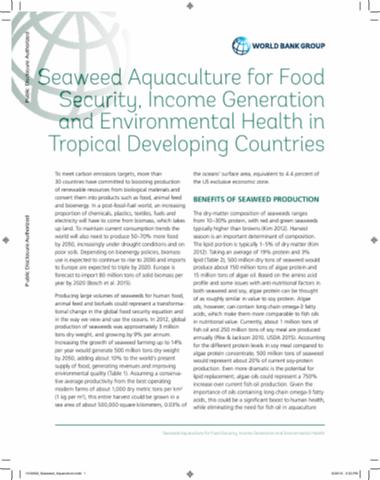To meet carbon emissions targets, more than 30 countries have committed to boosting production of renewable resources from biological materials andconvert them into products such as food, animal feedand bioenergy. In a post-fossil-fuel world, an increasingproportion of chemicals, plastics,…
To meet carbon emissions targets, more than 30 countries have committed to boosting production of renewable resources from biological materials andconvert them into products such as food, animal feedand bioenergy. In a post-fossil-fuel world, an increasingproportion of chemicals, plastics,…
The Government of Kenya is in the process of establishing a National REDD+ Programme through the Kenya Forest Service (KFS). Two critical elements of the National REDD+ Programme are forest reference levels (FRL) and a National Forest Monitoring System (NFMS). This document describes the steps…
Surface ruptures associated with the 2014 Kamishiro fault earthquake (Mj 6.7), appeared along the Itoigawa-Shizuoka Tectonic line active fault system in the northern part of Nagano Prefecture, central Japan. We photographed it with digital cameras mounted on an unmanned aerial vehicle (UAV).…
This paper summarizes the good practices by nine selected OECD countries that seek to promote responsible foreign investment in developing country agriculture, primarily by investors in their territory or jurisdiction. The study provides examples of the increasing trend of home countries in…
In this study, we investigated the lot owners' awareness of their own and neighborhood greeneries, and examined factors influencing their awareness including personal attributions and life histories as well as surrounding physical urban green environment. We also associated these awareness…
The purpose of this study is to clarify land improvement method of early collective housing sites developed by Japan housing corporation during 1960's-70's constructed on marshland on Nakagawa lowland in Saitama prefecture - Misato, Yoshikawa, Takesato, and Soka-Matsubara. Those…
The purpose of this paper is examine the notion of tenure in connection with water resources and to explore whether the concept of water tenure has the potential to make a useful contribution towards resolving the world’s water resources challenges. It seeks to provide answers to the following…
Accurate and consistent information on forest area and forest area change is important given the reporting requirements for countries to access results based payments for REDD+ . Forest area change estimates usually provide data on the extent of human activity resulting in emissions (e.g. from…
In article is devoted to problems of land relations in agriculture, which provides an analysis of the nature this dynamics in recent decades, assess the rationality of land use in the context of globalization and offers an innovative solution for forming a model of land relations in agriculture…
Restoring natural forests after field abandonment is a land management objective that fosters the recovery of forest biodiversity. We performed seeding and transplanting of native tree species 40 years after the abandonment of an arable field that became dominated by a dwarf bamboo (Pleioblastus…


